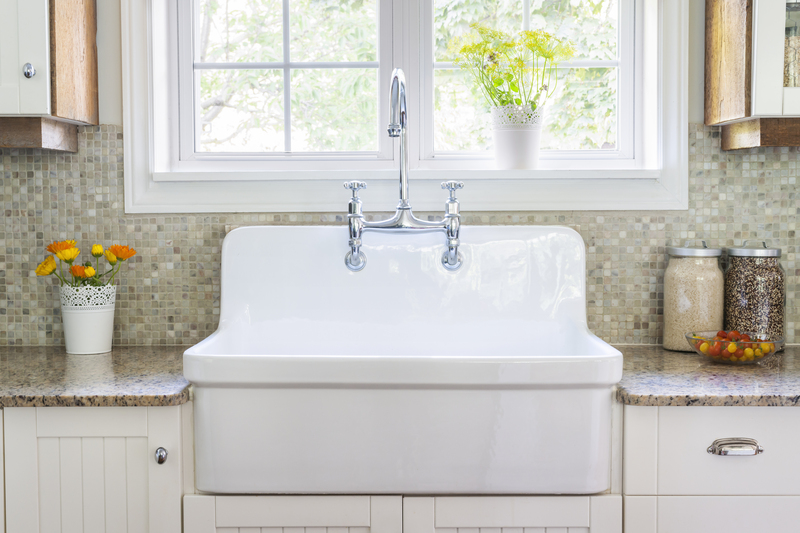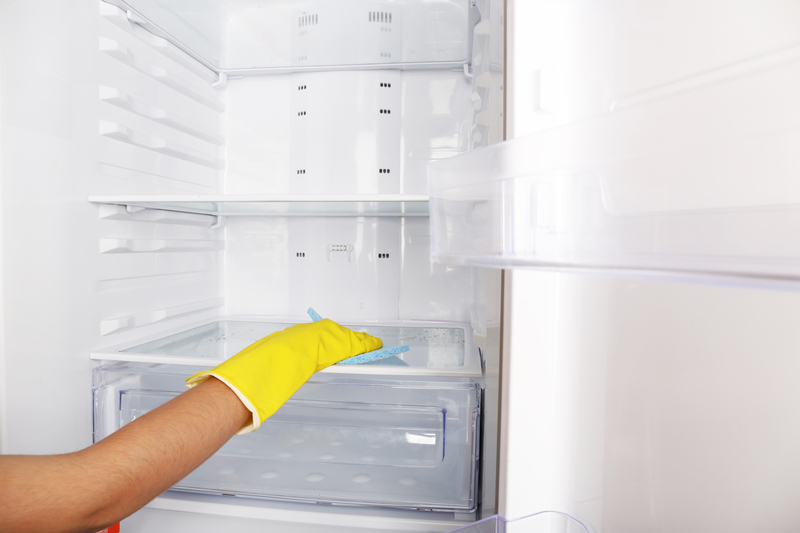Proven Solutions for Mould-Free Window Sills
Posted on 12/06/2025
Proven Solutions for Mould-Free Window Sills
Mould on window sills is more than just an eyesore--it can have serious implications for your home's appearance, the health of its occupants, and the structural integrity of your windows. If you're determined to tackle this persistent nuisance and achieve mould-free window sills for good, you've come to the right place. This comprehensive, SEO-optimized guide will explore proven solutions to prevent, remove, and control mould on window sills. Whether you're dealing with condensation, humidity, or poor ventilation, our tips and strategies will help you maintain a clean and healthy home environment.
Understanding Why Mould Grows on Window Sills
Before exploring solutions, it's crucial to understand why window sill mould is so common. Mould needs three things to thrive--moisture, organic material, and warmth. Window sills often provide all these ingredients because:
- Condensation collects on cold window panes, running down to the sills below.
- Dust and organic debris settle in the cracks and corners, serving as a food source for mould spores.
- Poor ventilation and high indoor humidity levels create the perfect breeding ground for persistent mould growth.

Step-by-Step: How to Remove Mould from Window Sills
Preparation: Safety First
Mould can cause allergic reactions and respiratory issues, so safety precautions are essential before cleaning. Always:
- Wear rubber gloves, goggles, and a face mask.
- Open windows (if safe) for ventilation.
- Keep children and pets away from the area.
Cleaning Mould Off Window Sills
- Prepare a cleaning solution: Mix one part white vinegar with one part water, or use a commercial anti-mould spray. For tough mould, consider adding a drop of dish soap or some baking soda for extra scrubbing power.
- Scrub the affected area: Dip a soft brush or non-abrasive sponge into the solution, and scrub the mouldy spots on the window sill. Be thorough in corners and crevices.
- Let the solution sit: Leave it on the surface for at least 10-15 minutes to penetrate and kill the mould spores.
- Wipe and rinse: Use a clean, damp cloth to wipe away the residue. Repeat if necessary.
- Dry the window sill: Ensure the surface is completely dry to prevent future mould regrowth.
Repeat this process regularly if you live in a damp climate or notice recurrent mould issues. A mould-free window sill is only possible with vigilant maintenance!
Preventative Measures for Mould-Free Window Sills
1. Control Moisture and Humidity
- Use a dehumidifier: Keep indoor humidity below 60%--ideally, around 40-50%--to discourage mould growth.
- Ventilate rooms: Open windows daily to allow fresh air circulation and reduce excess moisture.
- Fix leaks promptly: Repair any window or roof leaks immediately, as these can saturate sills and walls.
- Wipe down condensation: Use a clean cloth to regularly remove water droplets from window panes and sills, especially in the winter months.
2. Improve Window Sill Materials and Finishes
Traditional wooden sills are more prone to mould than synthetic or metal alternatives. Consider:
- Sealing wooden window sills with a mould-resistant varnish or paint. This creates a waterproof barrier and makes cleaning easier.
- Switching to uPVC or composite window sills that resist water absorption and are less hospitable to mould spores.
- Installing window sill covers, which can be easily wiped down and replaced if necessary.
3. Use Mould-Resistant Products
Preventative products can be highly effective in keeping your window sills mould-free:
- Apply anti-mould sprays or sealants regularly.
- Install mould-inhibiting strips or silica gel packs on sills to absorb extra moisture.
- Consider using natural mould inhibitors like tea tree oil solutions or clove oil for a chemical-free approach (always test for staining).
Ventilation: The Key to Long-Term Prevention
Proper ventilation is your best defense against recurring mould on window sills. Here are some actionable tips:
- Use trickle vents or openable transom windows to allow for continuous background ventilation.
- Install extraction fans in bathrooms and kitchens, where steam and humidity collect.
- Keep furniture and curtains away from windows to allow air movement around your window sills.
- Regularly check that vents and air inlets are not blocked by dust or debris.
Dealing with Black Mould on Window Sills
Black mould (Stachybotrys chartarum) is a particularly toxic variety that often appears as dark, sooty patches. If you discover black mould on your window sills, take these additional steps:
- Do not dry-scrape or vacuum black mould, as this releases dangerous spores into the air.
- Use an approved fungicidal spray specifically designed for black mould. Avoid bleach on wood, as it can damage the material and is not always effective on porous surfaces.
- Consider professional removal for large infestations or if you have underlying health issues. Persistent black mould may indicate deeper damp problems that require structural repairs.
Effective Maintenance Habits for Mould-Free Windows
- Regular Inspections: Make a habit of inspecting your window sills and frames for early signs of mould, damp patches, or paint blistering. Early intervention prevents bigger problems and costly repairs.
- Keep Sills Clean: Wipe your window sills weekly with a mild anti-mould cleaner or vinegar solution. Don't forget to clean behind blinds, curtains, and in grooves where dust accumulates.
- Mind Your Houseplants: Overwatering indoor plants near window sills can increase air moisture and contribute to decay. Ensure pots have drip trays and wipe up any spills promptly.
- Address Structural Issues: Cracked render, missing window caulking, or failed double glazing seals can let in the damp. Repair or replace these elements as soon as problems are identified.
Natural and Eco-Friendly Solutions for Mould Prevention
If you prefer green alternatives to harsh chemicals, there are several natural remedies for preventing and controlling mould on window sills:
- White vinegar: Naturally acidic and highly effective at killing spores. Spray, leave for 30 minutes, and wipe clean.
- Baking soda: Deodorizes and scrubs away light mould stains when made into a paste with water.
- Essential oils: Tea tree and clove oil are potent antifungals. Mix a few drops with water and spray onto surfaces (test first).
- Lemon juice: Natural acid breaks down mould and leaves a fresh scent.
Tip: Natural solutions are best for small patches and routine maintenance. For deep-set or recurring mould, more robust treatments are recommended.
How to Prevent Condensation on Windows and Sills
Condensation is the main cause of window sill mould. Use these strategies to keep surfaces dry and safe:
- Open windows after showering or cooking.
- Arrange furniture to allow air to circulate around windows.
- Use window insulation film in winter to reduce cold bridging and condensation.
- Dry laundry outdoors when possible--avoid placing wet clothes near windows.
- Regularly check heating and ventilation systems for correct operation.
When to Call a Professional for Mould Removal
Although many window sill mildew problems can be handled DIY, professional intervention is wise if you notice:
- Black mould covering an area larger than 1 square meter or spreading quickly.
- Mould returning after repeated cleanings, suggesting a hidden leak or structural issue.
- Signs of wood rot, soft sills, or crumbling masonry.
- Members of your household experiencing unexplained allergy symptoms or respiratory problems.
A mould specialist will diagnose underlying causes, safely remove infestations, and recommend moisture control solutions to ensure your sills stay truly mould-free.

Frequently Asked Questions about Mould on Window Sills
Is window sill mould dangerous?
Yes-- mould can trigger allergies, aggravate asthma, and cause respiratory complaints. Black mould in particular produces mycotoxins that can pose serious health risks with prolonged exposure.
What's the fastest way to remove mould from my window sill?
White vinegar or anti-fungal spray works rapidly to kill spores. Spray, wait, scrub, and dry thoroughly.
How can I prevent mould from coming back?
Control moisture, improve ventilation, and clean routinely. Apply mould-resistant products and tackle leaks promptly.
Can I paint over mould to hide it?
No. Painting over mould traps moisture and allows it to grow unseen--removal, drying, and priming are required before repainting.
Summary: Your Roadmap to Mould-Free Window Sills
- Understand the causes of window sill mould--primarily moisture and poor airflow.
- Clean existing mould safely with vinegar or an anti-mould solution.
- Reduce condensation and humidity using dehumidifiers, ventilation, and prompt leak fixes.
- Upgrade to mould-resistant materials or apply protective finishes to sills.
- Adopt regular cleaning and inspection habits to keep your home healthy and mould-free.
- Don't ignore black mould or persistent problems--consult a professional when needed.
By following these proven solutions for mould-free window sills, you'll protect your property, safeguard your health, and enjoy sparkling clean windows all year round.





